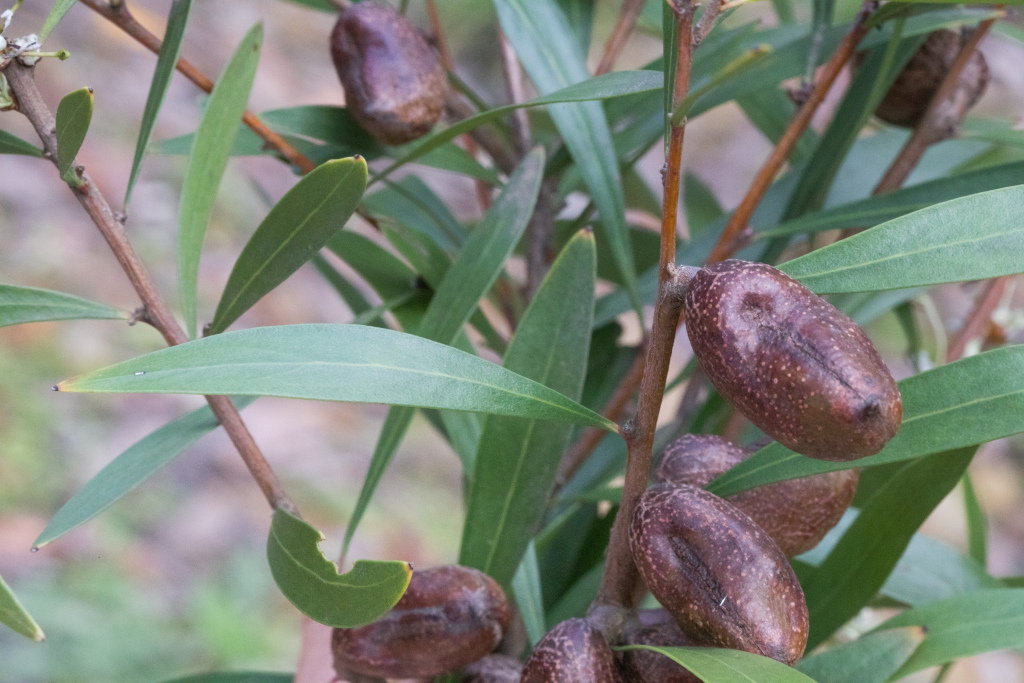Hakea
Shrubs or small trees, with T-shaped hairs. Leaves sessile, simple, terete, grooved below or not, or flat and entire (in Victoria) with venation obscure or obvious. Inflorescence an axillary umbelliform raceme developing within a cone of involucral bracts; flowers bisexual, pedicellate, paired; perianth (in Victoria) a cylindric tube with a curved apical limb in bud, when mature splitting to base into 4 tepals; anthers sessile within limb; gland present at base of pistil; pistil glabrous; ovary shortly stipitate, 2-ovulate; style recurved or, more rarely, erect; pollen presenter an erect, oblique or lateral disc or cone with narrow or broad basal flange. Fruit a smooth or rugose to tuberculate woody modified follicle usually dehiscent only on death of branch; seed winged.
150 species endemic to Australia; the greatest species diversity is in south-west Western Australia and on the east coast.
Species of Hakea are highly adapted to fire. Lignotuberous species resprout from the base after fire but non-lignotuberous species are killed. The woody fruits retained on the bush for long periods by both the lignotuberous and non-lignotuberous species, usually open only on the death of the branch which bears them, so their seeds are dispersed following fire.
Barker, R.M.; Barker, W.R.; Haegi, L. (1996). Hakea. In: Walsh, N.G.; Entwisle, T.J., Flora of Victoria Vol. 3, Dicotyledons Winteraceae to Myrtaceae, pp. 870–882. Inkata Press, Melbourne.
 Spinning
Spinning



